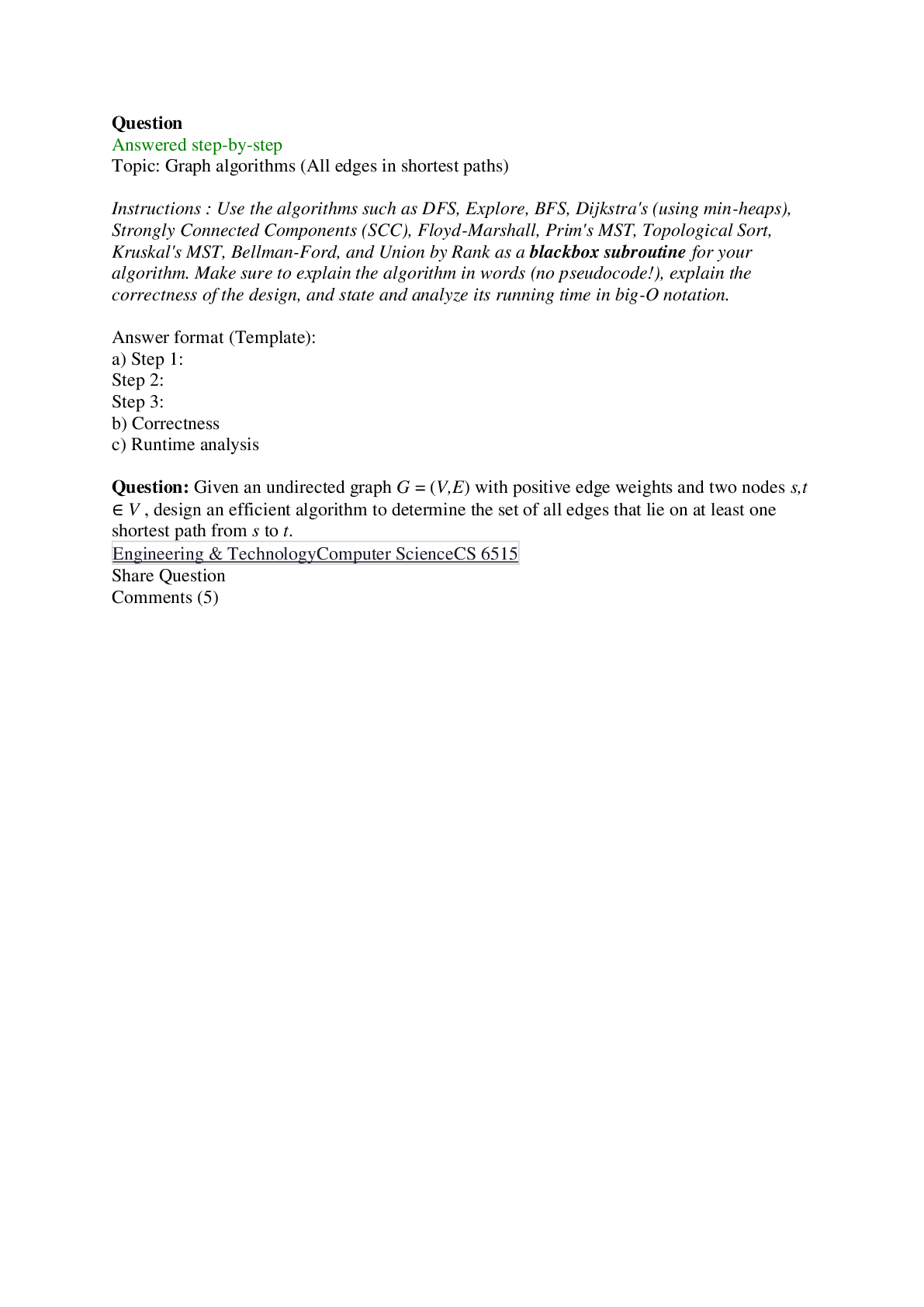SCIENCE 101 > QUESTIONS & ANSWERS > CSE 474 Gradiance Online Accelerated Learning QUESTIONS AND VERIFIED ANSWERS,100% SCORE (All)
CSE 474 Gradiance Online Accelerated Learning QUESTIONS AND VERIFIED ANSWERS,100% SCORE
Document Content and Description Below
Gradiance Online Accelerated Learning Homework Assignment Submitted Successfully. You obtained a score of 9.0 points, out of a possible 45.0 points. You have answered 3 questions correctly. You ha... ve answered 12 questions incorrectly. For each correct answer, you received 3.0 points and for each incorrect answer, you lost 0.0 points. Please Try Again. Submission number: 31989 Submission certificate: FG883348 Submission time: 2017-05-17 02:29:31 PST (GMT - 8:00) Number of questions: 15 Positive points per question: 3.0 Negative points per question: 0.0 Your score: 9 1. The figure below shows two positive points (purple squares) and two negative points (green circles): That is, the training data set consists of: (x1,y1) = ((5,4),+1) (x2,y2) = ((8,3),+1)(x3,y3) = ((7,2),-1) (x4,y4) = ((3,3),-1) This data set is separable. If we call the horizontal axis of the space u and the vertical axis v, then a form of the decision boundary is v=c+au. Note that in this form, c is the intersection of the boundary with the vertical (v) axis, and a is the slope. In all cases, if (u,v) is one of the points x1 or x2, then the point will be above the boundary (that is, if x1 = (u,v), then v ≥ c+au, and similarly for x2). Likewise, x3 and x4 must be below the boundary. Various values of a and c could be chosen, but there are significant constraints on what a and c can be. Deduce those constraints, and then find a possible value of a and c in the list below. a) v = 8 - u b) v = 8 - 3u/4 c) v = 7 - 2u/3 d) v = 4 - 3u/10 Answer submitted: c) You have answered the question correctly. 2. The figure below shows two positive points (purple squares) and two negative points (green circles): That is, the training data set consists of: (x1,y1) = ((5,4),+1) (x2,y2) = ((8,3),+1) (x3,y3) = ((7,2),-1) (x4,y4) = ((3,3),-1) Our goal is to find the maximum-margin linear classifier for this data. In easy cases, the shortest line between a positive andnegative point has a perpendicular bisector that separates the points. If so, the perpendicular bisector is surely the maximummargin separator. Alas, in this case, the closest pair of positive and negative points, x2 and x3, have a perpendicular bisector that misclassifies x1 as negative, so that won't work. The next-best possibility is that we can find a pair of points on one side (i.e., either two positive or two negative points) such that a line parallel to the line through these points is the maximummargin separator. In these cases, the limit to how far from the two points the parallel line can get is determined by the closest (to the line between the two points) of the points on the other side. For our simp [Show More]
Last updated: 2 years ago
Preview 1 out of 16 pages
.png)
Buy this document to get the full access instantly
Instant Download Access after purchase
Buy NowInstant download
We Accept:

Reviews( 0 )
$10.00
Can't find what you want? Try our AI powered Search
Document information
Connected school, study & course
About the document
Uploaded On
May 15, 2021
Number of pages
16
Written in
Additional information
This document has been written for:
Uploaded
May 15, 2021
Downloads
0
Views
49














.png)




.png)
.png)

